
The latest batch of USDA export inspection data, out Monday morning and covering the week ending February 28, showed grains falling mostly below analyst expectations.
“Export inspections last week also lagged behind rates needed to reach USDA’s forecasts for the 2018 marketing year, though it’s unclear whether that reflects subdued demand or transportation woes along the export pipeline to the Gulf,” noted Farm Futures senior grain market analyst Bryce Knorr. “High water and flooding continue to hamper movements from the Ohio River down to New Orleans with two locks closed along the Ohio near the confluence of the two waterways.”

Weekly export inspections for corn came in at 34.1 million bushels, moving slightly ahead of the prior week’s tally of 30.0 million bushels and in the middle of trade expectations that ranged between 29 million and 37 million bushels. The weekly rate needed to match USDA forecasts moved higher, to 53.1 million bushels – although year-to-date inspections for 2018/19 topped 1.016 billion bushels, which is trending 36% higher year-over-year.
Japan was the No. 1 destination for U.S. corn export inspections last week, with 11.1 million bushels. Other top destinations mostly originated from the Western Hemisphere and included Mexico (7.4 million), South Korea (5.3 million), Colombia (3.2 million) and Honduras (1.9 million).
Soybean export inspections reached 31.0 million bushels, down from the prior week’s tally of 48.1 million bushels and falling below analyst estimates that ranged from 33 million to 47 million bushels. The weekly rate needed to meet USDA forecast inched higher, to 34.1 million bushels. Cumulative totals for the 2018/19 marketing year reached 954 million bushels, still down 33% from a year ago.
China was the No. 1 destination for U.S. soybean export inspections last week, with 12.4 million bushels. Other top destinations included Egypt (5.5 million), the Netherlands (2.8 million), Mexico (2.3 million) and Japan (1.5 million).
“China was the leading destination but only accounted for only 40% of total inspections – not a terribly impressive number by historical standards in previous years,” Knorr says. “China accounts for 14% of total inspections so far as business attempts to return to normal while negotiators try to hammer out a deal, possibly by the end of March.”
Wheat export inspections totaled 16.2 million bushels last week, down from the prior week’s total of 28.2 million bushels and below trade estimates that ranged between 22 million and 29 million bushels. The weekly rate needed to match USDA forecasts continues to move higher, now at 26.9 million bushels. And cumulative totals for the 2018/19 marketing year have fallen 7.3% year-over-year, having reached 623 million bushels.
Mexico was the No. 1 destination for U.S. wheat export inspections last week, with 2.4 million bushels. Other top destinations included Indonesia (2.0 million), Yemen (1.8 million), Chile (1.7 million), Japan (1.4 million) and Algeria (1.1 million).
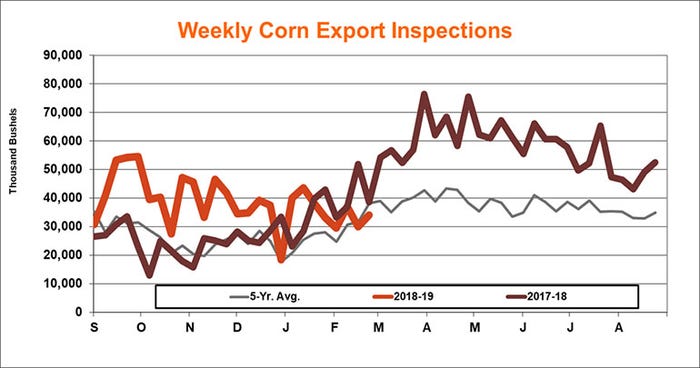
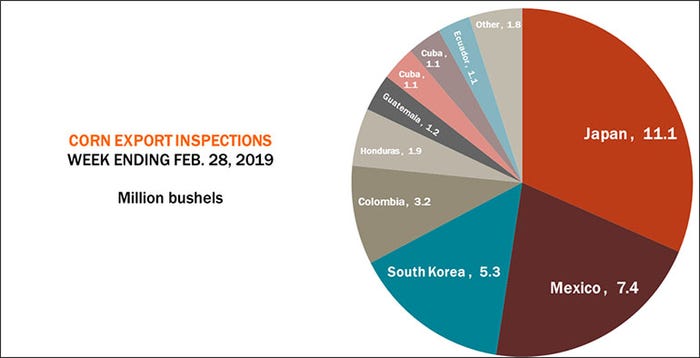
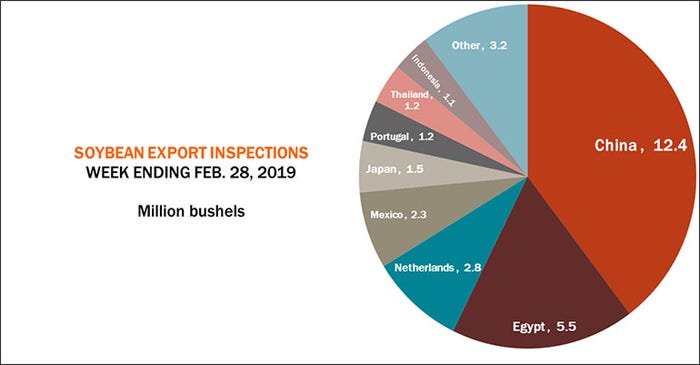
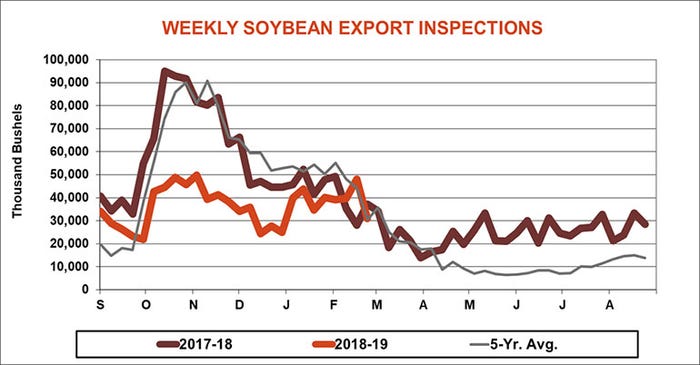
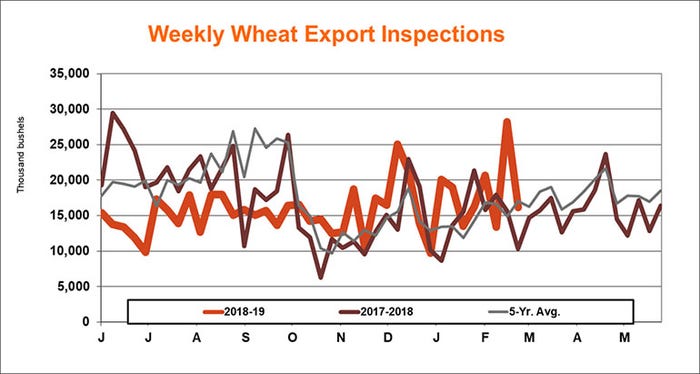
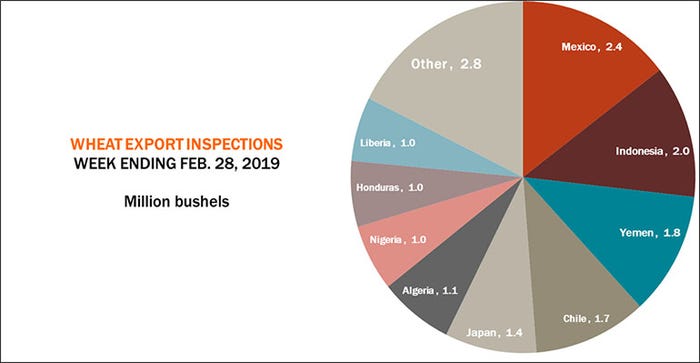
About the Author(s)
You May Also Like






